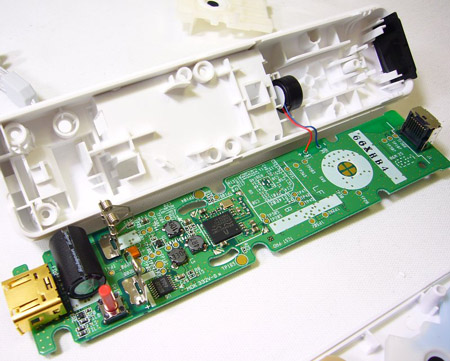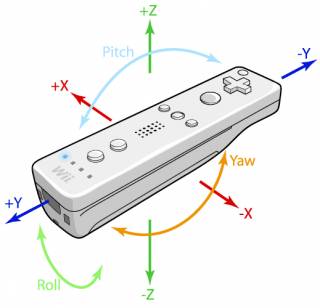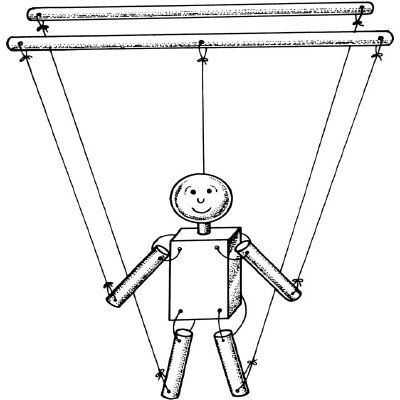Motion Controls And You. Part 1: waggle!
By Meowayne 17 Comments
Motion Controls And You. Part 1: Waggle
This is a series of posts that investigate in the field of motion controlled gaming. Beginning with the Nintendo Wii Remote that was announced in 2005, the goal is to look at each of the following systems - MotionPlus, Natal and Arc - looking into their respective technologies, advantages, disadvantages and implementations. (Or nobody cares and this will quickly disappear again.)

Nintendo was never very technical when unveiling and demonstrating new hardware and, much like Wii Sports did in 2006 with the capabilities of the Wii Remote, Wii Sports Resort has a habit of making people believe MotionPlus is capable of doing much more than it actually does.
It is not very surprising, then, that some early importers of Zangeki no Reginleiv and some hands-on reports of Red Steel 2 express careful scepticism: "Yeah, its very cool and all, but why isn't it 1:1?"
Nintendo lets this happen, and is setting a lot of people up for disappointment over upcoming releases, most notably The Legend of Zelda, by resorting to a simple and effective "Wii Motion Plus will transfer your movement into the game more precise than ever before!" instead of actually telling them what they can and more importantly, what they cannot expect. So lets get technical.

Apart from all the usual stuff for buttons, sound and vibration, the distinct features of a Wiimote are an Infrared Camera at the top, and a three-axis ADXL330 accelerometer right next to the A-Button (to the right of the red tube in the picture above). This tiny bug-sized little chip is where all the waggly magic happens. With a price tag of $25 per chip, you may see why the Wii remote, containing the ADXL330, a bluetooth radio and a multi-point 1024x768 100hz infrared camera is considered a remarkably cheap and diverse piece of hardware amongst hackers and homebrewers.
The bluetooth Infrared camera inside the Wiimote picks up two flickering spheres of infrared light (IR cameras see IR light and nothing else) coming from the sensor bar. Because these spheres change position and distance depending on where you hold the Wiimote, this data is used for your cursor (that is why it isn't perfectly mapped to where you point - the Wii doesn't know where and how big your TV is, only where the sensor bar is), both for its position and for its distance from the sensor bar.

What the ADXL330 accelerometer does is to detect relational acceleration along three axis - it measures the g-force that acts upon it. During acceleration, it can measure and record the XYZ direction, duration and speed it is moving in and sends this data via bluetooth to the Wii. When it is hold still, it is able to deduce its orientation in 3D space because of the downwards gravitational pull - until you turn it over. Turning it over along one of the axis provides ambiguous data, and the reading becomes unstable or useless. The same goes for unexpected change of orientation during accelerated movement: Straight lines of movement are awesome, wavy lines or rotation not so much.
Can you see where this is going? Cursor functionality aside, the Wiimote can detect its orientation in space, as long as it is hold still, and even then there is a high probability of error, especially when you turn it over. The probability of error when detecting accelerated motion is even higher, even more or less straight lines of motion cannot always be measured correctly.
And this is the technology Nintendo went with for detecting and translating motions of the human arm!


After the unsuccessful and saddening attempts at elaborate gesture-controlled segments of the first few waves of games however, games that turned many people away from the console, the majority of devs settled on simply using an I/O system - substituting a button press for "accelerator sending any sort of motion data". This (in many cases) pointless shaking of the Wiimote became quickly known as "waggle", and is very enthusiastically used to this day, even though it is mostly avoided or rather cleverly used these days.
Code seems to have improved on the reading of "jabs", the "distance" reading of the pointer is seen increasing popularity, unreliable gesture input is avoided and waggle only sparsely used in high-profile games - combining motions with the Nunchuck has also proven to work quite well. Interestingly, there is not an ADXL330 in the Nunchuk, but a "LIS3L02A", also a three-acis accelerometer that costs roughly the same but consumes less power. I have read one forum post that it actually works slightly better than the one used in the Wiimote itself, and that techies actually buy Nintendo Nunchucks as a cheap way to get a hold of LIS3L02As. Maybe the only reasons these are not built into the 'mote is cost reduction? Who knows.
But the inconsistencies and the very, very small room of possible implementations of the Wiimote and Nunchuck accelerometer remain, and the Classic Controller is getting more popular every week - especially in Japan. So popular that even games predestined for motion input such as No More Heroes 2 and Zangeki No Reginleiv receive optional Classic Controller support. And those in favor of regular Wiimote gesture input are often so because they have found out how the system wor ks, controlling their motions, knowing what the controller can do and what it can't do. Quite the opposite of the intuitive, easiliy approachable motion controls big N might have had in mind.
And that is even though Nintendo released a little peripheral in the summer of 2009 - over seven months ago - called MotionPlus, that, according to Nintendo themselves, contains technology that "was initially planned for the original hardware, and should have been in there from the start."

Next up:
